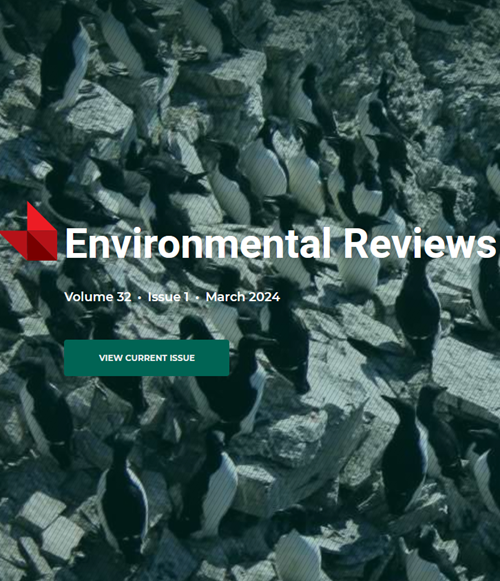估计受石油泄漏影响的水生鸟类数量:预先规划、应对和事件后考虑
IF 5.1
3区 环境科学与生态学
Q2 ENVIRONMENTAL SCIENCES
引用次数: 2
摘要
石油泄漏对水鸟的影响最为明显,通常受影响的鸟类数量是衡量事件对环境破坏的关键指标,这是公众沟通、种群管理和法律原因所必需的。我们回顾并概述了在三个阶段中可以采取的步骤,以提高估计受影响鸟类数量的准确性:1)预先规划;2)响应期间;3)事后反应。预先规划得越多,估计就越可靠。参与损害评估工作的人员必须接受定量生物学方面的培训,并且在所有三个阶段都需要支持。目前用于估计受影响鸟类数量的主要方法包括概率暴露模型和尸体抽样——陆上和水上都有。概率暴露模型可用于事件后阶段,特别是在无法进行海滩鸟类调查的海上情景中,需要三个数据集:1)海上鸟类密度;2)鸟类死亡率;3)泄漏轨迹。如果轨迹表明受影响的鸟类将到达海岸,则采用搁浅鸟类调查的尸体抽样是适当的。胴体取样也可通过水上样带进行,并可能与风险评估工作重叠。损害评估工作应包括测量泄漏急性期后的亚致死效应,但这一领域存在重大知识空白。我们敦促世界各地的司法管辖区改进事故前规划。我们就如何在没有事前数据的情况下,在事件发生期间或之后获得高质量数据提供指导。这些建议适用于有水产工业活动的地区,这些工业活动可能导致可能伤害或杀死水鸟的物质泄漏。本文章由计算机程序翻译,如有差异,请以英文原文为准。
Estimating the numbers of aquatic birds affected by oil spills: Pre-planning, response, and post incident considerations
Oil spills most visibly affect waterbirds and often the number of birds affected, a key measure of environmental damage from an incident, is required for public communication, population management, and legal reasons. We review and outline steps that can be taken to improve accuracy in the estimation of the number of birds affected in each of three phases: 1) pre-planning; 2) during a response; and 3) post-response. The more pre-planning undertaken, the more robust the estimates will be. Personnel involved in damage assessment efforts must have training in quantitative biology and need support during all three phases. The main approaches currently used to estimate the number of birds affected include probability exposure models and carcass sampling – both onshore and on the water. Probability exposure models can be used in the post-incident phase, particularly in offshore scenarios where beached bird surveys are not possible, and requires three datasets: 1) at-sea bird densities; 2) bird mortality; and 3) the spill trajectory. Carcass sampling using beached bird surveys is appropriate if trajectories indicate affected birds will reach shore. Carcass sampling can also occur via on-water transects and may overlap with risk assessment efforts. Damage assessment efforts should include a measure of sublethal effects following the post-acute phase of spills, yet this area has significant knowledge gaps. We urge jurisdictions worldwide to improve pre-incident planning. We provide guidance on how, in the absence of pre-incident data, quality data can be obtained during or after an incident. These recommendations are relevant for areas with aquatic-based industrial activities which can result in a spill of substances that could injure or kill waterbirds.
求助全文
通过发布文献求助,成功后即可免费获取论文全文。
去求助
来源期刊

Environmental Reviews
环境科学-环境科学
自引率
3.50%
发文量
45
期刊介绍:
Published since 1993, Environmental Reviews is a quarterly journal that presents authoritative literature reviews on a wide range of environmental science and associated environmental studies topics, with emphasis on the effects on and response of both natural and manmade ecosystems to anthropogenic stress. The authorship and scope are international, with critical literature reviews submitted and invited on such topics as sustainability, water supply management, climate change, harvesting impacts, acid rain, pesticide use, lake acidification, air and marine pollution, oil and gas development, biological control, food chain biomagnification, rehabilitation of polluted aquatic systems, erosion, forestry, bio-indicators of environmental stress, conservation of biodiversity, and many other environmental issues.
 求助内容:
求助内容: 应助结果提醒方式:
应助结果提醒方式:


